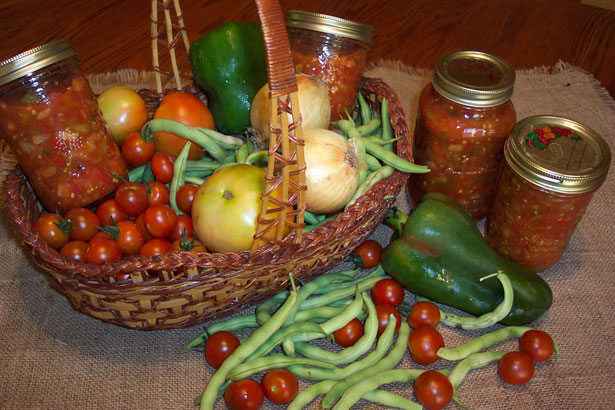How to Afford Food Storage
Many people have the perception that a food storage has to be expensive, or that you have to do it all at once. They let themselves be overwhelmed by the prospect, and end up doing nothing. Achieving a functional food storage is an attainable goal by any family.
There is no “right way” to do it. There are a few wrong ways (like going into debt for it, or stocking up on ten year’s supply of Little Debbies), but there are enough right ways that one of them is bound to fit your situation.
1. Monthly budget. You can assign a certain amount per month to food storage. It need not be a huge amount. Even $10 a month will get you there in the long term, if you stock up on sale items. $25 to $50 per month will generally allow you to participate in a monthly plan through a food storage supply company.
2. Spend the same, buy more. Any time an item on your grocery list is on sale, add an extra if you can do so and still stay within the amount you intended to spend.
3. Shop less often. There is real magic in this! You’ll plan better, eat better, and spend less. If you spend the same, or split the savings (half in savings, half to food storage), and you’ll still be amazed at how quickly you accumulate a usable supply. The key to this one is that every time you go in the store, you usually lose a certain amount on impulse buys. If you reduce those impulse buys, you have that money for more important things.
4. The Two-Can Plan. Buy two extra cans of food every time you go shopping.
5. One Plus One. If you are purchasing dry packed food, grains or beans, or bucketed food storage, aim for ordering one item each time you go to the grocery store, or one item per month.
6. Food Storage On the Hoof. Get chickens, ducks, rabbits, or other animals that can eat your kitchen produce scraps and leftovers. You’ll still need some feed for them, but they’ll benefit from kitchen waste, and reduce your expenses, while providing a food source that replenishes itself, reducing the need for other kinds of food storage.
7. Grow a Garden, and Save Seed. You can grow a garden any time of the year, even if it is just sprouts in the kitchen – usually though, you can do way more than that! A garden reduces food costs if you do it smart, and gives you food reserves that keep producing. It can provide surplus to can, freeze, dry, or brine. It can provide seeds this year to grow next year. A good garden can be started for $100 or less (often WAY less), and can produce hundreds or even thousands of dollars worth of produce from that investment. Keep it simple, and make sure each expense really IS an investment.
8. Look for sales on produce, and preserve it. A $30 food dryer from Wal-Mart is sufficient to dry large volumes of food, one to two batches a day (as long as it has a fan, it will dry food quickly and efficiently). You can often find canning supplies at yard sales or being given away, and canning isn’t nearly as hard or as expensive as you think – Don’t Bother Buying a Waterbath Canner. Many foods freeze easily, and all you need are zip bags (some vegetables need to be blanched before freezing, but most fruits do not, and a large number of veggies don’t require it either). Dried or frozen foods may be stored in repurposed containers – peanut butter jars are a great storage container, as are other reusable containers.
9. Stock up on cheap storage items. Tuna, dried beans, rice, split peas, pork and beans, canned soup, and other items that cost less than $1 per item. It is easier to start with these items – either one or two at a time, or by the case. Easier to think of getting case goods when you know they’ll only cost you $12 for a case.
10. If you buy bulk grains in bags instead of in pre-packed buckets, you can significantly reduce the cost of acquiring bulk grains or beans. If you have 5 gallon buckets shipped, they’ll usually cost more than if you acquire them locally (feed stores usually carry them). Buckets can sometimes be obtained used, either free, or for a low cost, from fast food restaurants or bakeries.
You can’t do a food storage with no sacrifice. You have to give something. But if you think about what you can do, and what you are good at, you can find a way that works for you. It IS achievable.







